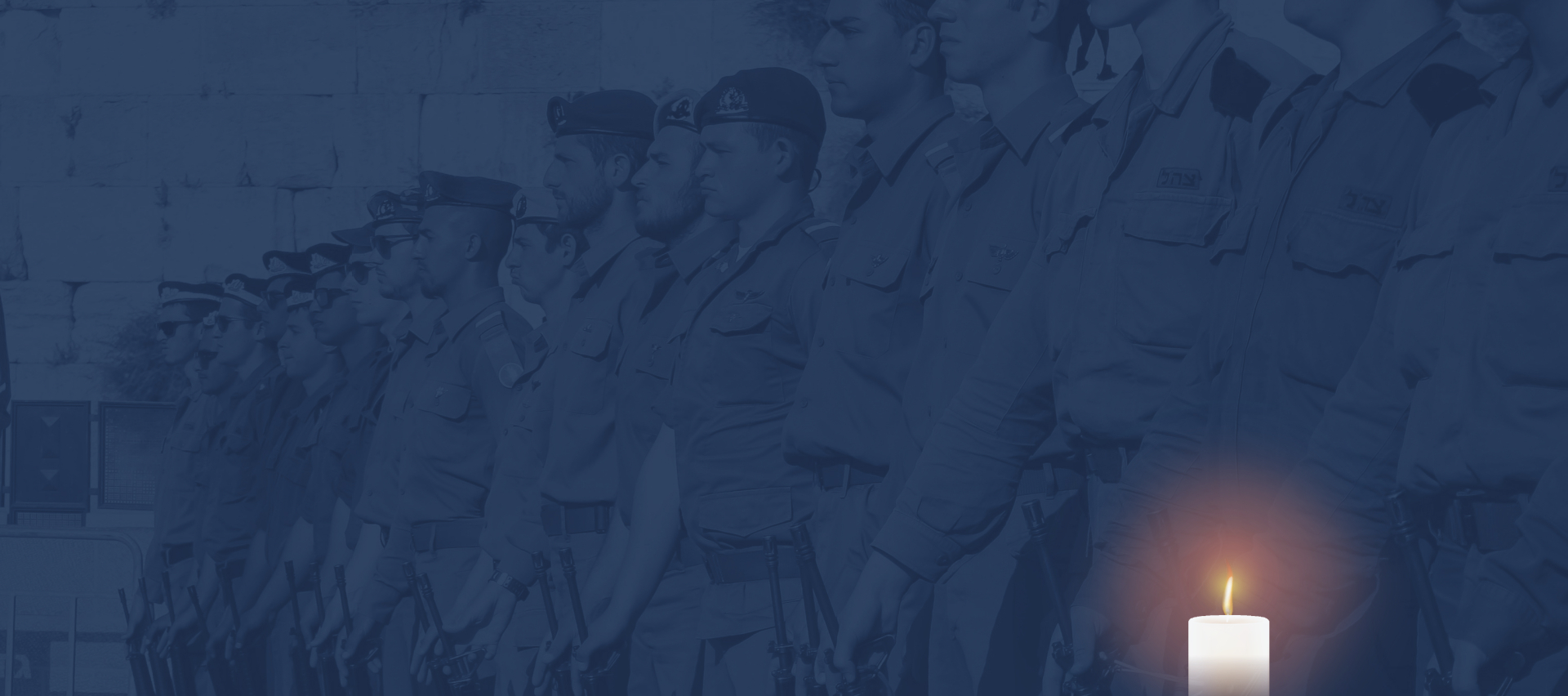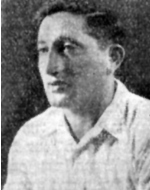,אֵ-ל מָלֵא רַחֲמִים, שׁוכֵן בַּמְּרומִים, הַמְצֵא מְנוּחָה נְכונָה
,עַל כַּנְפֵי הַשְּׁכִינָה בְּמַעֲלות קְדושִׁים, טְהורִים וְגִבּורִים
כְּזֹהַר הָרָקִיעַ מַזְהִירִים, לְנִשְׁמות חַיָּלֵי צְבָא הֲגָנָה לְיִשְׂרָאֵל



Petrushka, Nathaniel
Netanel, the son of Alta and Arieh Leib, was born on 10.10.1923 in Poland, in the town of Opatow, in the Kielce district, where he studied diligently in a “cheder” and an elementary school. On the eve of World War II, Poland was the focal point of world Jewry in the fields of religious, national, political, social and cultural activity, with a population of about 3.5 million Jews.The severe economic crisis of the late 1930s affected Poland’s agriculture and exacerbated the tone Anti-Semitism, and the repression of the Jews, who were considered to have a key status in economic life On September 1, 1939, World War II broke out with the German invasion of Poland and its conquest in a lightning war (“Blitzkrieg.”) Immediately anti-Jewish decrees and regulations were promulgated that resulted in the social isolation of the Jews, their economic deprivation and the undermining of all The Germans arrived in Opatow, and in the spring of 1941 many ghetto refugees were brought to the ghetto from nearby towns, increasing overcrowding, sanitary conditions became more severe, and a typhus epidemic took place. At the end of October 1942, the remaining 6,000 Jews were deported to the Treblinka death camp. By the end of the war, most of the Jews of Opatow had been exterminated. Their fate was the fate of 90 percent of Polish Jewry. At the beginning of the war, Nathaniel’s older brothers were drafted into the Polish army and fell into captivity. On Purim, in March 1941, the father of the family was murdered by a Nazi soldier, and not long afterward Nathaniel was taken to a labor camp, like the rest of the fit for work in the ghetto, fearing his old mother. Was caught and sent back to the camp from which he escaped, while his brother died in the same camp and was mistakenly registered in the office of Netanel, who died in the camp. He was transferred from one camp to another until he was liberated by the Russian army in May 1945. His decision to immigrate to Palestine was delayed because he wanted to see him Poland, hoping to find the remains of his family, but when it became clear that no one had left for Warsaw and joined a kibbutz of the Ichud movement, he was sent to participate in organizing a training branch of the movement, “(Pioneer Pioneer Youth) and found its place in the religious part of it. With the group he moved to Bergen-Belsen, which after the liberation became a DP camp and began social, cultural and political rehabilitation. Nathaniel later sought to sneak into Belgium to reach a pioneering concentration organizing the illegal immigration to Palestine, but on the Belgian border he and his comrades were caught and transferred to a British prison in Hamburg, Germany. Despite the hunger, the suffering and the difficult investigations, they did not give any information about the organizers of the illegal immigration. A few months later they were released and sent to a DP camp in Landsberg, Germany. In this camp Netanel met with a Jewish Brigade emissary from Kfar Etzion who heard about the religious group and the village and decided to join him when he arrived in Israel. With the “Bnei Akiva” group, Nathaniel managed to reach Italy and spent several months at the “Ayala” training center in Wilmedona. On August 2, 1946, he boarded the “23 Yordei Hasira” ship, sailing from the port of Boca de Migra in Italy with 790 immigrants on board the ship. British, it sent her a destroyer and the British sailors took over the ship and towed orTea for Haifa Port. The immigrants began a hunger strike in protest against their expected deportation, and after a violent struggle they were put on a British ship and taken to the deportation camps in Cyprus. In Nathaniel, Nathaniel was mainly involved in learning Hebrew and Haganah matters. After a few months he was allowed to immigrate to Israel, but here he was arrested and sent to the Atlit detention camp. Upon his release from Atlit, Netanel joined Kfar Etzion, the first Gush Etzion settlement. Where he was gradually absorbed into work and society, and was liked by his friends for his good qualities. According to the United Nations Partition Plan of 29 November 1947, the Gush Etzion bloc was not included in the Jewish state, and immediately after the decision, the Arab neighbors began harassing the Gush Katif settlements, and for a long time the bloc was under Arab siege. The members of the older bloc belonged to the Haganah and served in the “Etzioni” Brigade (the “Jerusalem” Brigade) – the 6th Brigade. The Haganah also reinforced the Etzion Bloc in the field forces from Jerusalem and Tel Aviv and Palmach During the months of defense of the bloc, Nathaniel worked in defense, defense, and fortification work, and at the same time received from his relatives in America money and a permit to visit them , But refused to leave the country when she needed every one of her sons, and he was inclined to shoulder every difficult and dangerous task, encouraged those who fell in their spirit and helped the weak in their bodies. , Get well soon. In one of the battles, on May 4, 1948, Nathaniel served with the only machine gun, standing firmly in the midst of the fire, and continuously operating the machine gun against the enemy, (The “Arab Legion”), the unit of the Arab Legion carried the heavy machine gun back to the village, and on the 12th of May 1948, soldiers of the Legion attacked a large force And succeeded in approaching and settling near Kfar Etzion On the following day, 4 May 1948, an armored Jordanian force attacked the village and, with intense shelling, broke into it. Many Arabs from the surrounding villages joined the attack, conquered the settlement and destroyed it completely. About one hundred of the village fighters fell on this day, and Nathaniel among them. Some were murdered after their surrender. The day after the declaration of the state, the three other Gush Etzion settlements fell. The bloc ceased to exist, and the remnants of its defenders were captured by the Jordanians. Nathaniel was twenty-four years old in his fall. The bodies of the dead remained in Jordan and their remains were collected in a special operation by the military rabbinate in 1949, about a year after the end of the battle. They were brought to eternal rest in a large mass grave on Mount Herzl in Jerusalem at a state ceremony held on the 17th of Cheshvan 5710 (17.11.1949). This hero is a “last scion”. The survivors of the Holocaust are survivors of the Holocaust who survived the last remnant of their nuclear family (parents, brothers, sisters, sons and daughters) who experienced the Holocaust in the ghettos and / or concentration camps and / or in hiding and hiding in territories occupied by the Nazis and / Or in combat alongside members of the underground movements or partisans in the Nazi-occupied territories who immigrated to Israel during or after World War II, wore uniforms and fell in the Israeli army.

